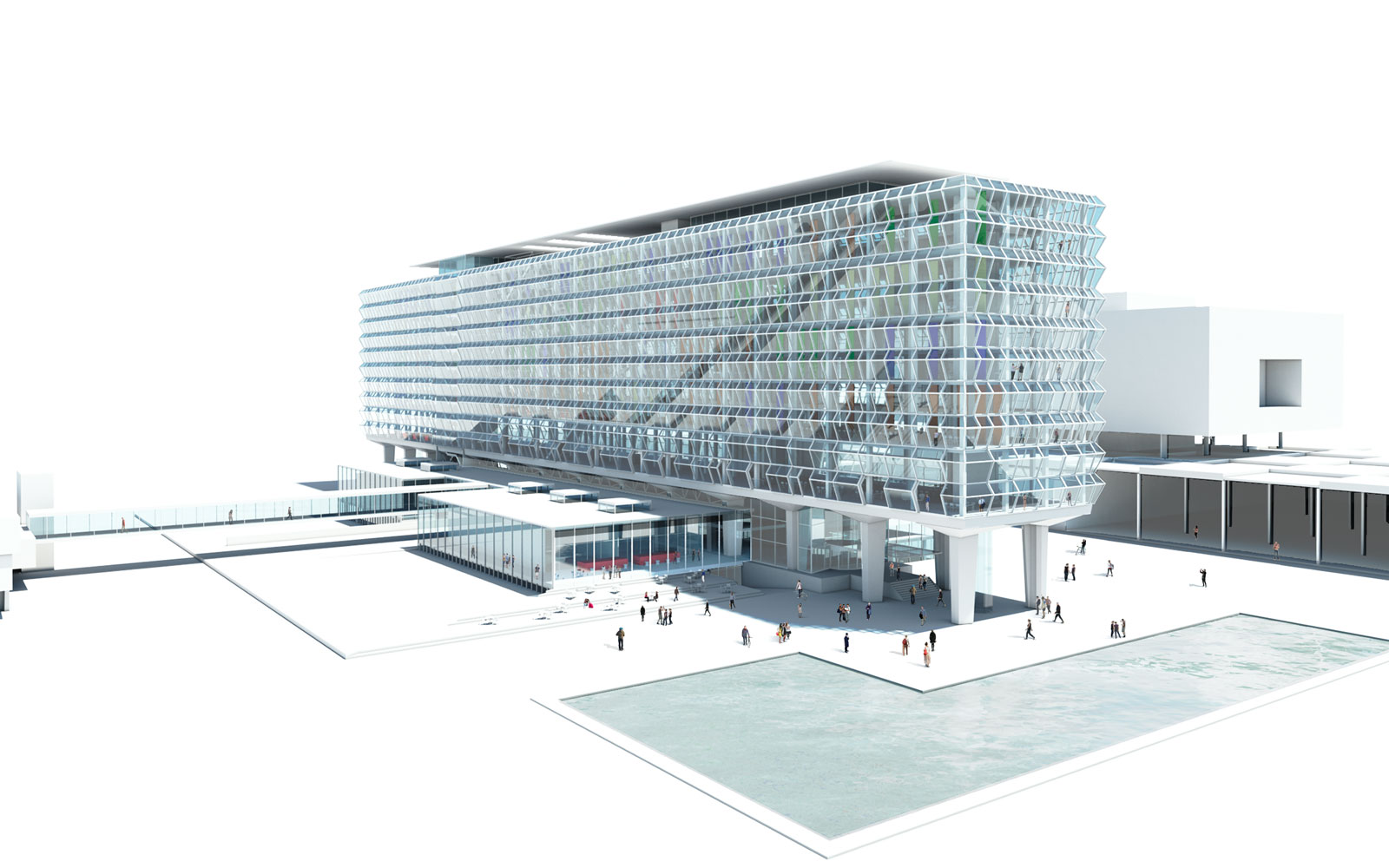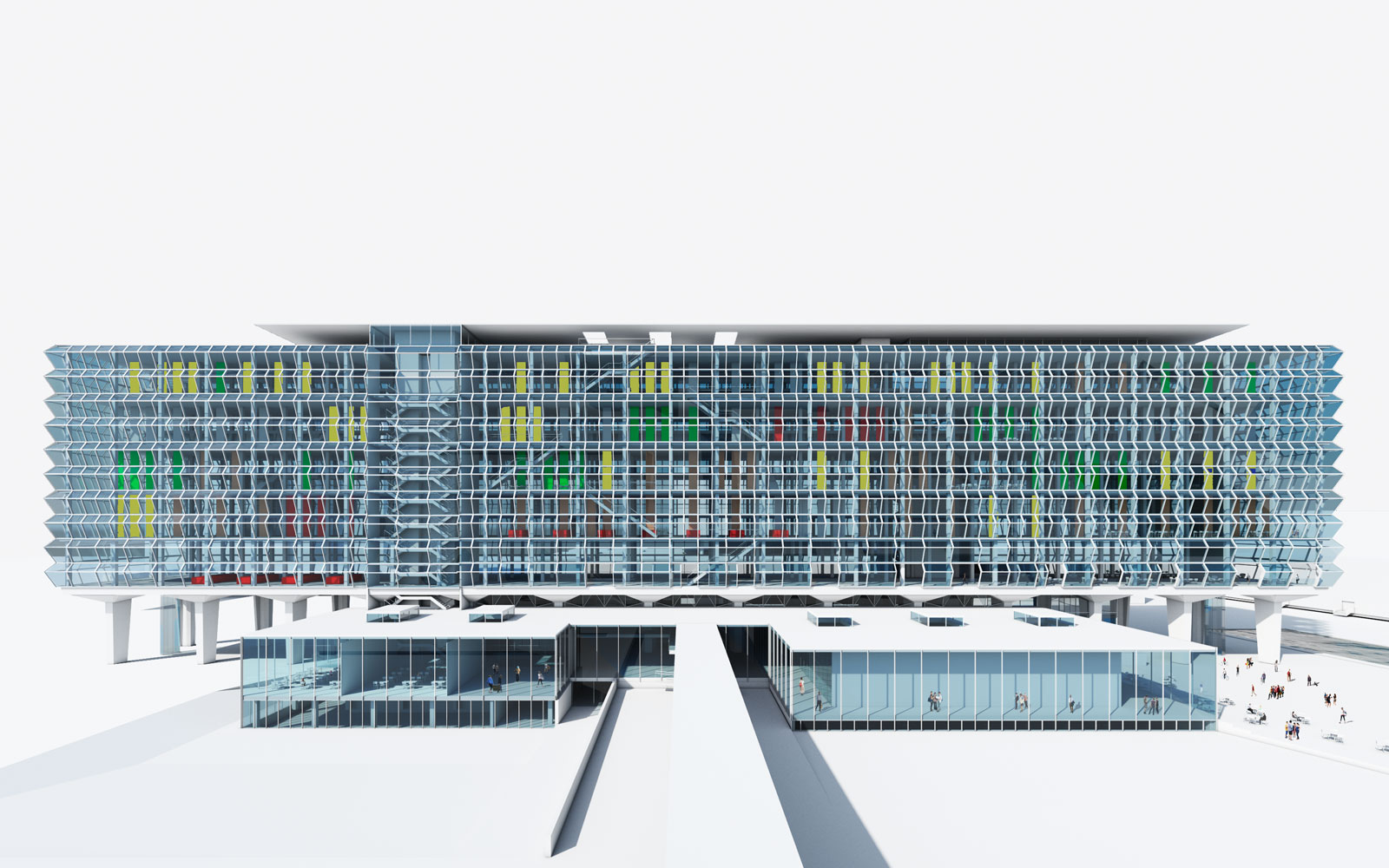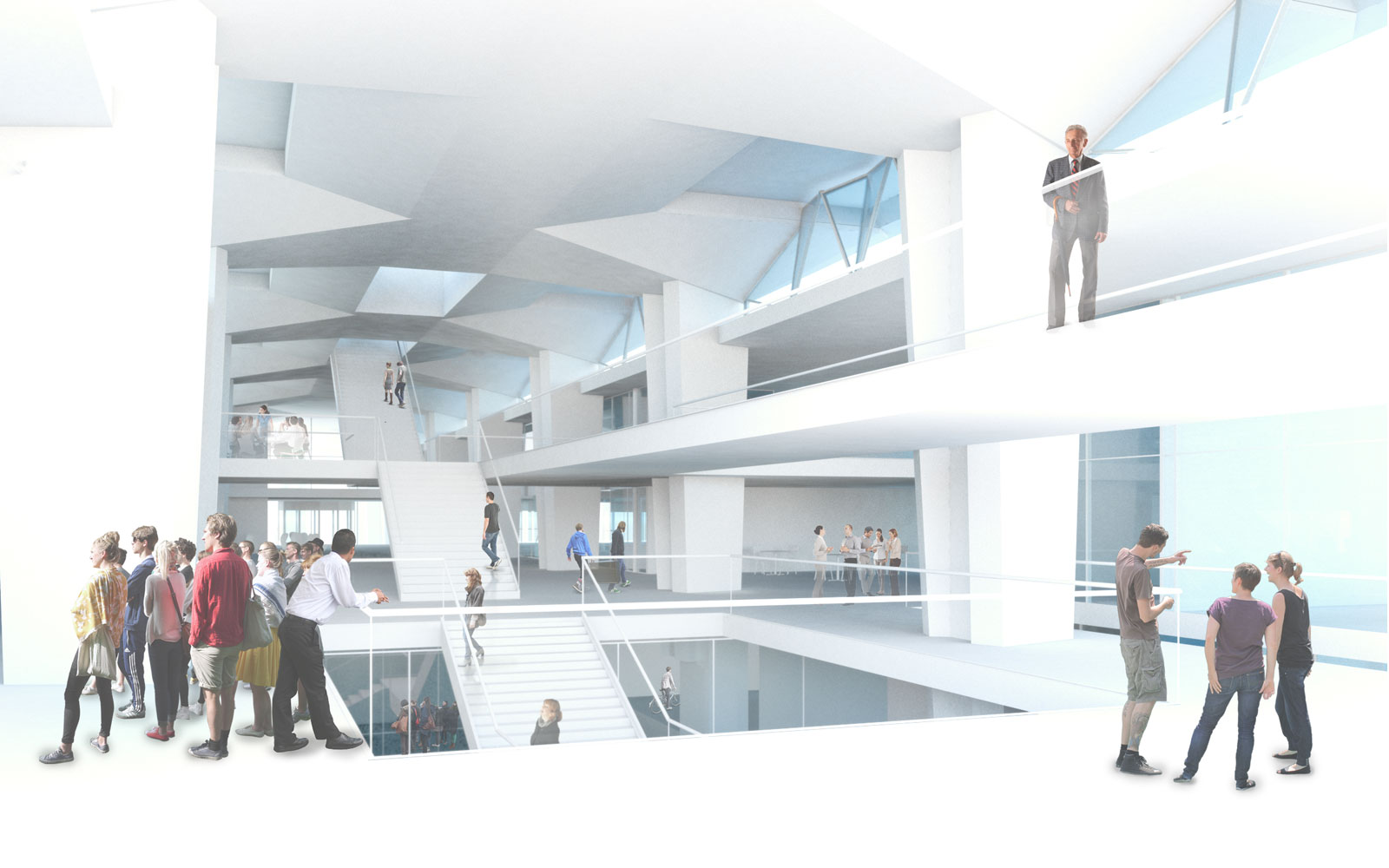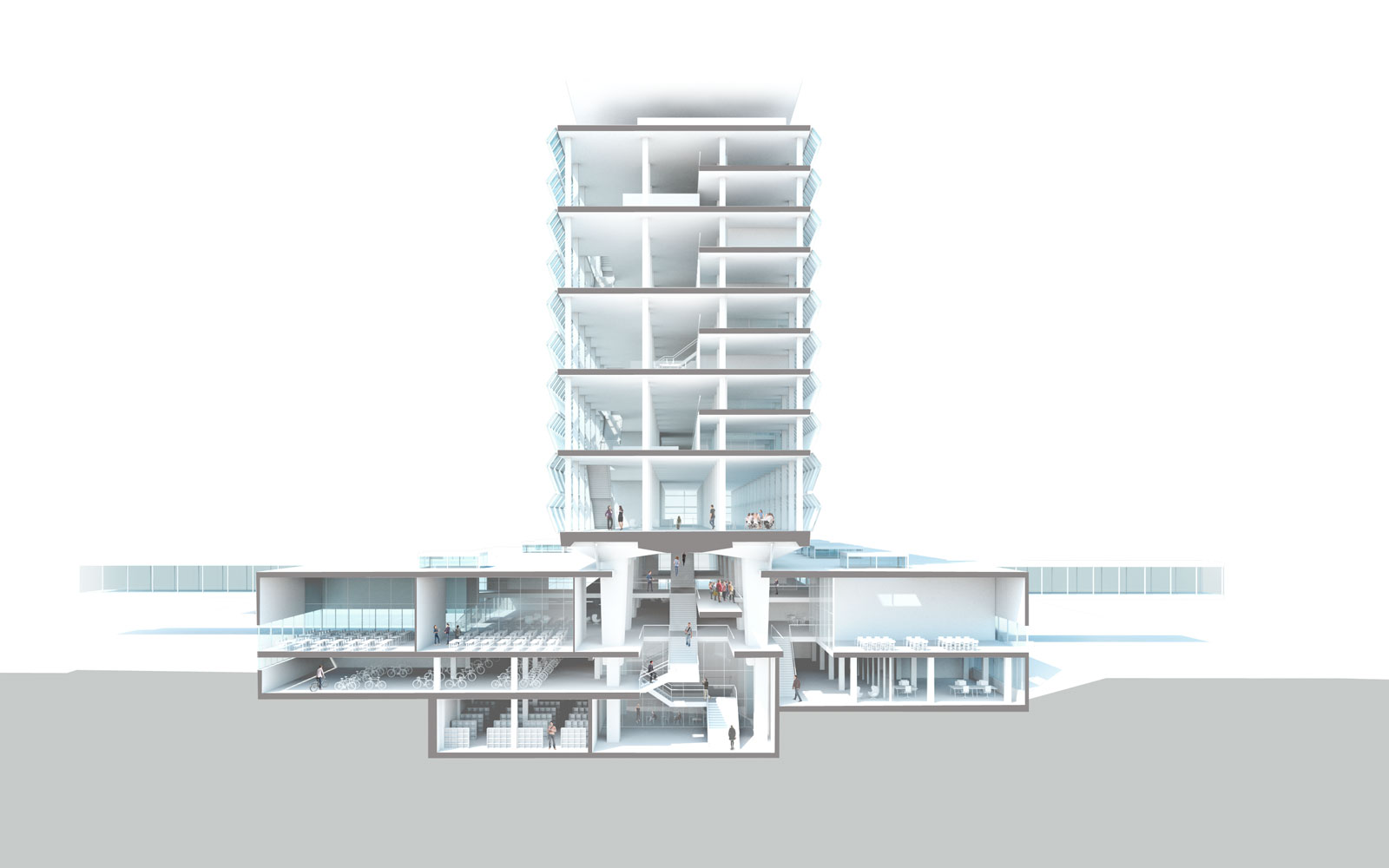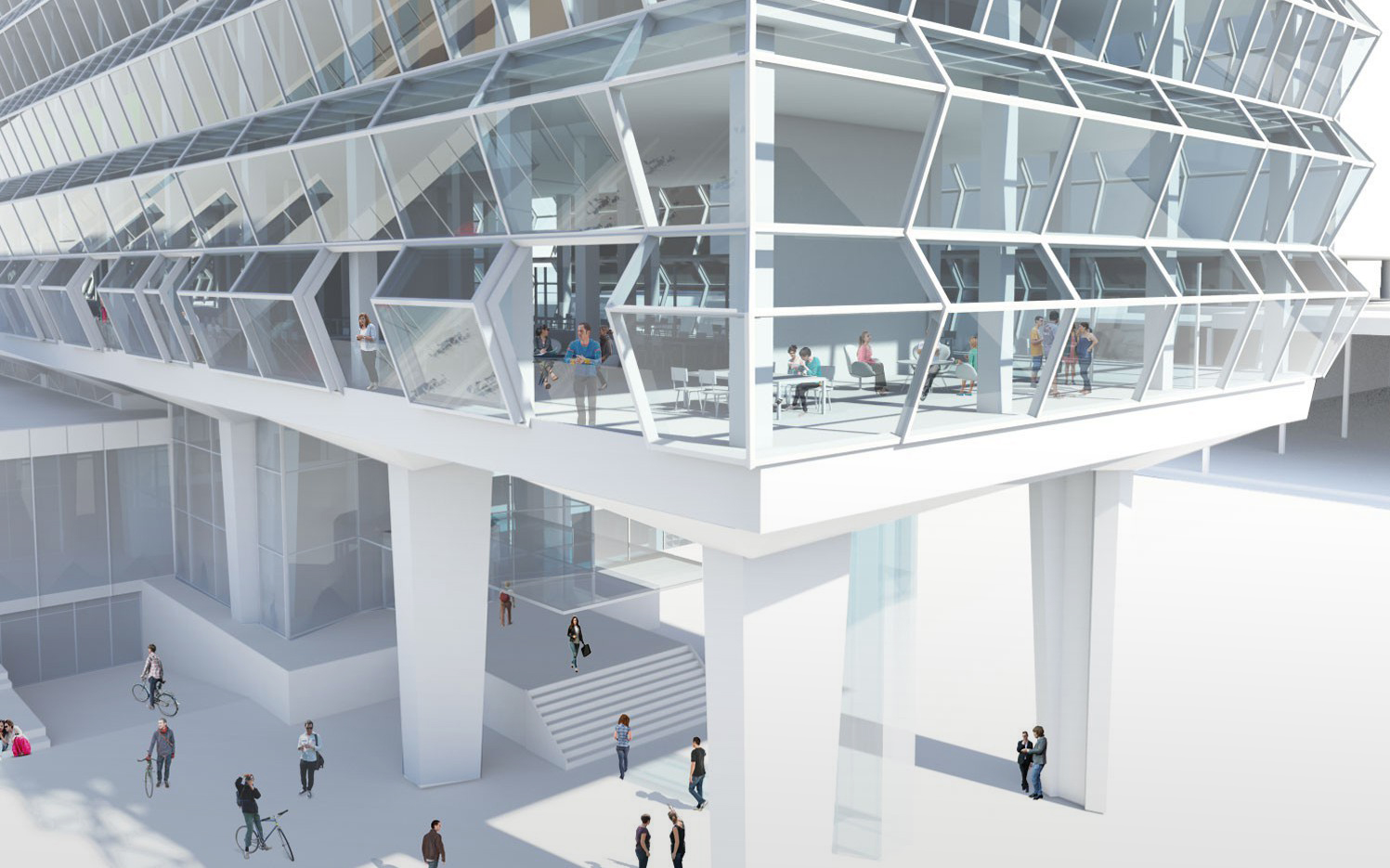
Optimizing energy performance
Form-follows-climate approach to optimize energy performance
Broekbakema submitted a competition entry for the renovation of University of Technology, Eindhoven’s 13 storey main building. The 42,000m2 project packs in office spaces, design studios, class rooms and a restaurant and houses 4000 users.
Collaborating with Kraaijvanger Architects, Arup and DGMR, Broekbakema was responsible for updating the facade and set out to use Sefaira to come up with a high performing design solution.
Broekbakema’s approach to the design was “form follows climate” — instead of being solely dependent on technical solutions, this means the architectural form should contribute tangible solutions to climatic issues. To achieve this, Broekbakema investigated several design options – shortlisting to the most high performing design strategy. The challenge was getting an instant measure of how a design impacts daylight, heating or cooling loads. Using Sefaira’s Revit tools, the design team selected a final facade design that:
- achieved a minimum daylight factor of 5 (1)
- projects a great indoor air quality and
- reduced cooling loads by 20%.
The competition entry was awarded a very high sustainability score as the client had specified a minimum daylight factor of 3 and a preferred value of 5 as well as a minimum air quality of 800ppm (parts per million CO2). The typical solution for balancing high daylight factors with low glare would be a highly technical facade with moveable sunblinds, such as a ventilated double skin facade. Whilst this approach is effective, it can also be very expensive. The resultant design was a sawtooth facade with a honeycomb structure. Larger glazed sections were tilted downwards and smaller parts tilted upwards.
Aldo Vos, architect and director at Broekbakema said, “As architects we are responsible for the comfortable climate of the buildings we design. Instead of instantly using technical solutions that are common and within reach, we put effort into finding even better (and cheaper) solutions within architecture — it’s design. That’s how we believe sustainable buildings should be designed. Sefaira is based on trustworthy software that helps to instantly measure our design decisions and helps to guide the design.”
Notes
- CIBSE Lighting Guide 10 (LG10-1999) which broadly bands average daylight factors into the following categories: Under 2 – Not adequately lit – artificial lighting will be required. Between 2 and 5 – Adequately lit but artificial lighting may be in use for part of the time. Over 5 – Well lit – artificial lighting generally not required except at dawn and dusk – but glare and solar gain may cause problems.
- Partners
- Sefaira
